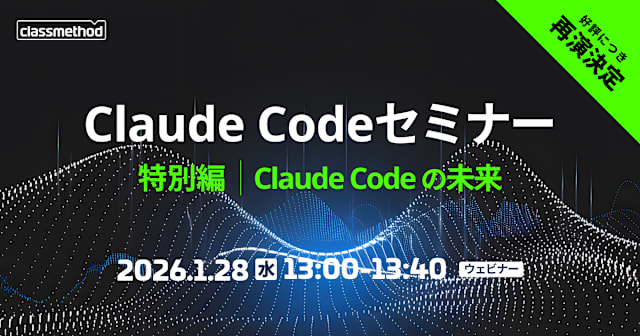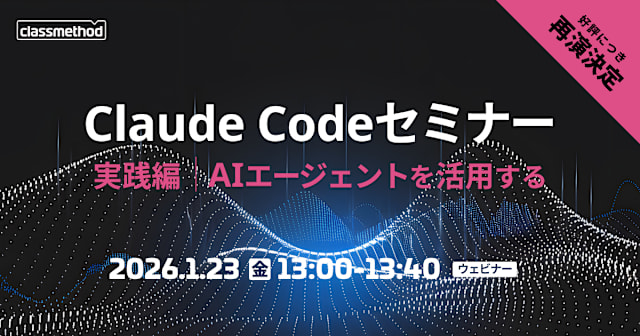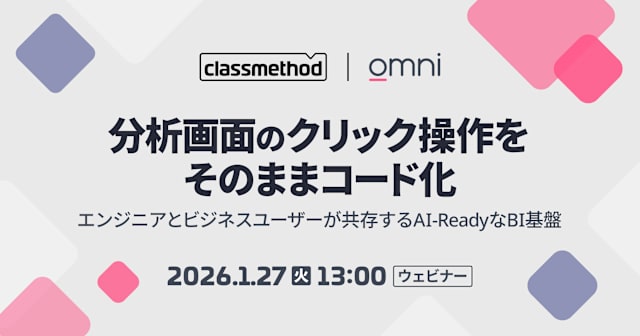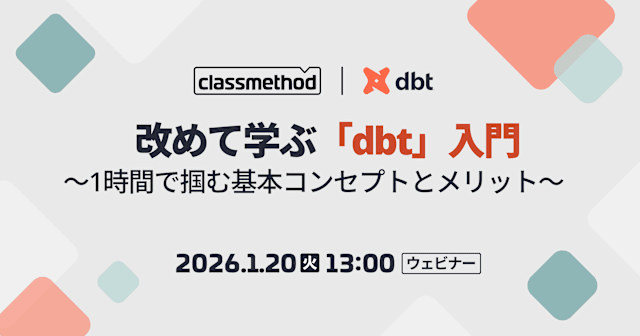![[アップデート]Amazon Bedrock インテリジェントプロンプトルーティングがGAされたので試してみた](https://images.ctfassets.net/ct0aopd36mqt/wp-thumbnail-e3065182082062711612153bbdcf1d96/c04359de689df2f56eb066576ab63fb5/amazon-bedrock?w=3840&fm=webp)
[アップデート]Amazon Bedrock インテリジェントプロンプトルーティングがGAされたので試してみた
お疲れさまです。とーちです。
Amazon Bedrock インテリジェントプロンプトルーティングがGAされたというアップデートがありました。
今回はこの機能を実際に試してみて、どのように動作するのか検証してみたいと思います。
なお、プレビュー時の記事は以下になります。インテリジェントプロンプトルーティングについて詳しく解説されているのでこちらもご参照ください。
GAでの主な変更点
GAにともない、いくつかの機能強化が行われています。
設定の柔軟性が向上
これはデフォルトルーターだけでなく「Configured prompt router」というカスタマイズしたルーターが使えるようになったということです。具体的には以下のような設定ができます。
- ルーティング基準、リクエストのルーティング方法、使用するモデルなどをカスタマイズ可能
モデル選択の自由度向上
モデルファミリーから任意の2つのモデルを選択し、ルーターのルーティング条件を設定できるようになりました。
新しいモデルのサポート追加
Amazon Nova familyなどの新しいモデルも追加されました。現在は、以下のモデルをサポートしています。
- Anthropic's Claude family: Haiku, Haiku 3.5, Claude Sonnet 3.5 v1, Claude Sonnet 3.5 v2
- Meta Llama family: Llama 3.1 8B, 70B, 3.2 11B, 90B and 3.3 70B
- Amazon Nova family: Nova Pro and Nova Lite
詳細なドキュメントはこちらで確認できます:Understanding intelligent prompt routing in Amazon Bedrock - Amazon Bedrock
料金について
Amazon Bedrockの公式料金ページを確認したところ、プロンプトルーティング機能自体に対する明示的な料金設定は記載されていません。このことから、現時点ではプロンプトルーティング機能自体は追加料金なく提供されており、実際に処理を行ったモデルの標準利用料金のみが課金対象となると考えられます。つまり、ルーティングによって選択されたモデル(Claude Haiku、Claude Sonnetなど)の通常料金体系が適用されると推測されますが、あくまでも推測なので、最新かつ正確な情報については、AWS公式ドキュメントまたはAWSサポートに確認することをお勧めします。
基盤モデルを使用した生成 AI アプリケーションの構築 – Amazon Bedrock の料金 – AWS
試してみる
それでは実際にプロンプトルーティングを試してみましょう。
プロンプトルーティングの設定
プロンプトルーティングの設定はBedrockの以下の項目から遷移できます。

設定項目はそれほど多くなく、基本的な構成で簡単に始められるようになっています。

ルーターの名前と説明
まずはルーターの名前と説明を設定します。

ルーター名は対象AWSアカウントのリージョン内で一意である必要があります。
モデル選択
次にルーティング対象のモデルを2つ選択します。

注意点として、2つのモデルは同じモデルプロバイダーである必要があります。例えば Claude 3.5 Sonnet v2 を一つめのモデルとして選択した場合は、2つめのモデルはAnthropicのモデルの中から選ぶ必要があるということです。
今回は Claude 3.5 Sonnet v2 とClaude 3.5 Haiku v1 を選択してみました。

Fallback modelとRouting criteria設定

こちらの公式ドキュメントにインテリジェントプロンプトルーティングの仕組みが詳しく説明されています。
ルーティングの仕組みとして、受信したリクエストごとに指定した各モデルのレスポンス品質を予測します。この際に各モデル間のレスポンス品質の差が基準を満たさない場合はフォールバックモデルが選択されるとのことです。
つまり具体的には以下のようなステップでモデルが選択されると思われます
- Bedrockが内部的に各モデルの応答品質を予測
- その予測に基づいて、モデル間の品質差をパーセンテージで計算します(これがレスポンス品質の差)
- 設定した閾値(例:10%)と比較します(これがレスポンス品質の差の閾値で、Configure prompt routerの
Response quality difference (%)で設定する値) - 品質差が閾値を超える場合のみ、より高品質と予測されるモデルを選択します
例えば、Claude Haiku3をフォールバックモデルとして設定し、Response quality difference (%)を10%に設定した場合、Claude Sonnet3の予測応答品質がHaiku3より10%以上優れている場合のみ、Sonnet3が選択されるということです。
公式ドキュメントにも以下のように記載があります。
For example, a response quality difference of 10% means that, say the response quality of the fallback model, Claude Haiku3, is 10%, then the router will switch to another model, say Claude Sonnet3, only if its responses are 10% better than Claude Haiku3's responses.
今回はフォールバックモデルは Claude 3.5 Haiku v1 にしました。Response quality difference (%)は後で色々変えてみようと思います。
実際にプロンプトを実行してみる
こちらのプログラムを参考にさせてもらい、以下のようなプログラムを作りました。このプログラムでResponse quality difference (%)やプロンプトを変えながら色々試してみます。
import boto3
import json
# リージョンとプロンプトルーターARNを設定
region_name = "us-west-2"
prompt_router_arn = "<作成したプロンプトルーターのARN>"
# Bedrock Runtimeクライアントをセットアップ
client = boto3.client("bedrock-runtime", region_name=region_name)
def ask_question(question):
"""
指定された質問をプロンプトルーターに送信し、応答を取得する関数
"""
response = client.converse(
modelId=prompt_router_arn,
messages=[
{
"role": "user",
"content": [{"text": question}],
}
],
inferenceConfig={
"temperature": 0.1,
"topP": 0.9,
"maxTokens": 500,
"stopSequences":[]
}
)
# 応答テキストを取得
answer_text = response["output"]["message"]["content"][0]["text"]
# レスポンス全体をデバッグ用に表示(必要に応じてコメントアウト)
# print("DEBUG - Full response structure:")
# print(json.dumps(response, default=str, indent=2))
# 使用されたモデルIDを取得
model_id = "不明"
try:
if 'trace' in response and 'promptRouter' in response['trace'] and 'invokedModelId' in response['trace']['promptRouter']:
full_model_id = response['trace']['promptRouter']['invokedModelId']
if "inference-profile" in full_model_id:
model_id = full_model_id.split("inference-profile")[1]
else:
model_id = full_model_id
except Exception as e:
model_id = f"取得できませんでした(エラー: {str(e)})"
return answer_text, model_id
def main():
# ユーザーからの質問を受け付ける
user_question = input("質問を入力してください: ")
# 質問を送信して応答を取得
answer, model = ask_question(user_question)
# 結果を表示
print("\n=== 回答 ===")
print(answer)
print(f"\n使用されたモデル: {model}")
if __name__ == "__main__":
main()
なお、レスポンスの中には以下のように invokedModelIdという項目にどのモデルが呼び出されたかという情報も含まれますので、どのモデルが使われたのかという記録も取ることができます。
"trace": {
"promptRouter": {
"invokedModelId": "arn:aws:bedrock:us-west-2::foundation-model/anthropic.claude-3-5-haiku-20241022-v1:0"
}
}
日本語での質問テスト
まず、Response quality difference (%)を40%に設定して、日本語で簡単な質問をしてみました。
(venv) bash-5.2$ python main.py
質問を入力してください: 日本の首都は?
=== 回答 ===
東京です。東京は日本の首都であり、最大の都市でもあります。政治、経済、文化の中心地として、日本の中心的な役割を果たしています。東京都は1868年に首都となり、明治維新後、日本の政治的、経済的中心地として発展してきました。
使用されたモデル: arn:aws:bedrock:us-west-2::foundation-model/anthropic.claude-3-5-haiku-20241022-v1:0
簡単な質問なので、Claude 3.5 Haiku v1が選択されていますね。
次に、より複雑な質問をしてみます。
(venv) bash-5.2$ python main.py
質問を入力してください: 量子コンピューティングの原理を使って、機械学習における勾配消失問題を解決する新しいアプローチを提案してください。量子もつれと量子重ね合わせの概念がどのように深層ニューラルネットワークの学習プロセスを改善できるか、具体的な数学的フレームワークとともに説明してください。
=== 回答 ===
量子コンピューティングを活用した勾配消失問題への革新的なアプローチを提案させていただきます。
核となるアイデア:
1. 量子状態の重ね合わせを利用して、ニューロン間の結合を量子ビットで表現
2. 量子もつれを活用して、層間の非局所的な相関を確立
3. 量子測定による効率的な勾配計算
具体的なフレームワーク:
1. 量子ニューロンの定義
|ψ⟩ = α|0⟩ + β|1⟩
(|α|² + |β|² = 1)
従来のニューロンの活性化値を量子状態として表現
2. 量子重み行列
W = Σᵢⱼ wᵢⱼ|i⟩⟨j|
重みを量子演算子として定義
3. 量子活性化関数
U(θ) = exp(-iθH)
ユニタリ変換による非線形変換
4. 勾配計算
∂L/∂θ = Tr(ρ[H,O])
量子期待値による効率的な勾配計算
利点:
- 指数関数的な状態空間による豊かな表現力
- 量子並列性による高速な計算
- 非局所的相関による効果的な情報伝播
実装上の課題:
1. 量子デコヒーレンス
2. 量子-古典インターフェース
3. 必要な量子ビット数
これらの課題に対する研究を進めることで、実用的なソ
使用されたモデル: arn:aws:bedrock:us-west-2::foundation-model/anthropic.claude-3-5-sonnet-20241022-v2:0
今度は複雑な質問に対して、Claude 3.5 Sonnet v2が選択されました。これは、より高度な内容に対して、高性能なモデルが必要だとシステムが判断したと考えられます。
閾値の変更とモデル選択の関係
次に、Response quality difference (%)を5%に下げて同じ質問を試してみます。この設定では、モデル間の品質差が5%以上あれば高性能なモデルが選択されるため、より頻繁にClaude 3.5 Sonnet v2が選ばれることが期待されます。
(venv) bash-5.2$ python main.py
質問を入力してください: 量子コンピューティングの原理を使って、機械学習における勾配消失問題を解決する新しいアプローチを提案してください。量子もつれと量子重ね合わせの概念がどのように深層ニューラルネットワークの学習プロセスを改善できるか、具体的な数学的フレームワークとともに説明してください。
=== 回答 ===
量子コンピューティングを機械学習の勾配消失問題に適用する革新的なアプローチを提案します。以下に、理論的フレームワークと実装の詳細を説明します。
量子勾配学習フレームワーク:
1. 量子状態エンコーディング
- 入力データを量子ビット空間にマッピング
- 量子位相エンコーディング技法を使用
- 高次元情報の効率的な表現
数学的定式化:
|ψ⟩ = ∑(i=1 to 2^n) αi |i⟩
2. 量子勾配計算
- 量子微分回路の導入
- パラメータ依存の量子状態変換
- 勾配情報の並列的抽出
勾配演算子:
∇U(θ) = ∂/∂θ [⟨ψ(θ)|H|ψ(θ)⟩]
3. 量子もつれを利用した勾配伝播
- エンタングルメント拡散による情報伝達
- 指数関数的な情報伝播速度
- 長距離依存性の効率的な学習
4. 量子重ね合わせによる探索空間拡大
- 並列的パラメータ最適化
- 確率的勾配降下法の量子拡張
- 大域的最適解への収束性向上
実装アルゴリズム:
```python
class QuantumGradientNetwork:
def __init__(self, num_qubits, layers):
self.num_qubits = num_qubits
self.quantum_circuit = QuantumCircuit(num_qubits)
使用されたモデル: arn:aws:bedrock:us-west-2::foundation-model/anthropic.claude-3-5-haiku-20241022-v1:0
予想に反して、閾値を下げたにもかかわらず、Claude 3.5 Haiku v1が選択されました。プレビュー段階では、英語のプロンプトのみが正式にサポートされていたという情報があったため、日本語での質問に対するモデル選択が安定していない可能性があります。
英語での質問テスト
日本語と英語での違いを確認するため、同じ質問を英語で試してみましょう。
(venv) bash-5.2$ python main.py
質問を入力してください: Propose a new approach to solving the gradient vanishing problem in machine learning using the principles of quantum computing. Explain how the concepts of quantum entanglement and quantum superposition can improve the learning process of deep neural networks, along with a specific mathematical framework.
=== 回答 ===
Here's a novel approach to addressing the gradient vanishing problem using quantum computing principles, along with a detailed mathematical framework:
Quantum-Enhanced Gradient Flow (QGF) Framework
1. Core Concept:
The proposed approach leverages quantum superposition and entanglement to maintain gradient strength across deep neural networks by creating quantum-classical hybrid connections between layers.
2. Mathematical Framework:
a) Quantum State Representation:
Let's represent each neuron's state as a quantum superposition:
|ψᵢ⟩ = α|0⟩ + β|1⟩
where α² + β² = 1
b) Layer Transformation:
For layer l, define the quantum-classical hybrid transformation:
H̄ₗ = Uₗ(θ)|ψₗ₋₁⟩⟨ψₗ₋₁|Uₗ(θ)†
where:
- Uₗ(θ) is a parameterized quantum circuit
- |ψₗ₋₁⟩ is the quantum state of the previous layer
3. Quantum Gradient Preservation:
Define the quantum gradient operator:
∇Q = ∑ᵢ (∂/∂θᵢ)|ψᵢ⟩⟨ψᵢ|
The gradient flow equation becomes:
∂L/∂θₖ = Tr(∇Q H̄ₖ)
4. Implementation Strategy:
a) Quantum Layer Design:
- Create entangled qubit pairs between adjacent layers
- Use quantum gates for non-linear transformations
- Implement measurement-based feedback
b) Hybrid Learning Algorithm:
```python
def quantum_gradient_update(network, input_data):
# Initialize quantum states
quantum_states = prepare_quantum_states(input_data)
# Forward propagation
for layer in network.layers:
quantum_states = apply_quantum_transformation(
quantum_states,
layer.parameters
)
# Quantum-enhance
使用されたモデル: arn:aws:bedrock:us-west-2::foundation-model/anthropic.claude-3-5-sonnet-20241022-v2:0
英語での質問に対しては、Claude 3.5 Sonnet v2が選択されました。このことからやはりGAされた2025/4現在でも英語のみが正式にサポートされているとことなのかと思ったのですが、英語で質問した際も質問によっては高いしきい値で逆に、claude-3-5-sonnetが選択される事象が見受けられたので、単純に応答品質を正確に予測するのは難しいということなのかもしれません。
複数の質問パターンでの検証
より体系的に検証するため、異なる質問と閾値の組み合わせでテストを行いました。以下は英語での質問に対する結果をまとめた表です:
| 質問文 | 選択されたモデル (5%) | 選択されたモデル (40%) | 選択されたモデル (70%) |
|---|---|---|---|
| Where is the capital of Japan? (日本の首都はどこですか?) |
Claude 3.5 Haiku | Claude 3.5 Haiku | Claude 3.5 Haiku |
| Write a short story based on the themes of "time," "mirror," and "shadow." The story should have a non-linear time structure and alternate between first-person and third-person perspectives. Additionally, arrange the first letters of each paragraph vertically to reveal a hidden message. (「時間」「鏡」「影」をテーマにした短編小説を書いてください。物語は非線形的な時間構造を持ち、一人称と三人称の視点が交互に切り替わる形式で書いてください。また、各段落の最初の文字を縦に読むと隠されたメッセージが現れるようにしてください。) |
Claude 3.5 Haiku | Claude 3.5 Haiku | Claude 3.5 Sonnet v2 |
| Propose a new approach to solving the gradient vanishing problem in machine learning using the principles of quantum computing. Explain how the concepts of quantum entanglement and quantum superposition can improve the learning process of deep neural networks, along with a specific mathematical framework. (量子コンピューティングの原理を使って、機械学習における勾配消失問題を解決する新しいアプローチを提案してください。量子もつれと量子重ね合わせの概念がどのように深層ニューラルネットワークの学習プロセスを改善できるか、具体的な数学的フレームワークとともに説明してください。) |
Claude 3.5 Sonnet v2 | Claude 3.5 Sonnet v2 | Claude 3.5 Sonnet v2 |
創造的質問(Write a short story based on the themes〜)に関して、70%で逆にSonnetが選ばれているのが謎ですね。何度かやったら変わるのかもしれませんが。
以下に結果の全文も載せておくのでご興味があればご参照ください。
結果の全文
5%の場合
(venv) bash-5.2$ python main.py
質問を入力してください: Where is the capital of Japan?
=== 回答 ===
The capital of Japan is Tokyo. It is located on the eastern side of Honshu, the largest of Japan's main islands. Tokyo is not only the political center of Japan, but also its largest city and a major global economic hub.
使用されたモデル: arn:aws:bedrock:us-west-2::foundation-model/anthropic.claude-3-5-haiku-20241022-v1:0
(venv) bash-5.2$ python main.py
質問を入力してください: Write a short story based on the themes of “time,” “mirror,” and “shadow.” The story should have a non-linear time structure and alternate between first-person and third-person perspectives. Additionally, arrange the first letters of each paragraph vertically to reveal a hidden message.
=== 回答 ===
Here's a story that meets your specifications:
Ticking, always ticking. The clock on the wall seems to mock me, its hands spinning in unpredictable arcs. I catch my reflection in the mirror, but something feels displaced—as if the image isn't quite my own.
Inevitably, shadows lengthen across the room, stretching like memories that refuse to fade. Marcus watches himself, noticing how the light distorts his features, creating strange geometries of self.
Memories blur like watercolors, running into each other. I remember—or am I remembering?—standing here before, watching my younger self move through identical moments.
Echoes of past and future collide in this space. Marcus realizes the mirror isn't reflecting reality, but something else entirely—a parallel existence where time bends and twists.
When I reach out, my hand passes through the glass surface, feeling neither cold nor resistance.
Shadows dance, no longer bound by physical laws. Marcus understands now that time is not linear, but a complex web of intersecting moments.
Hidden within these fragments, a truth emerges: we are never truly singular, always multiple versions of ourselves existing simultaneously.
Interestingly, the first letters spell "TIMEWISH" - a subtle narrative hint about the story's themes of temporal manipulation and desire.
使用されたモデル: arn:aws:bedrock:us-west-2::foundation-model/anthropic.claude-3-5-haiku-20241022-v1:0
40%の場合
(venv) bash-5.2$ python main.py
質問を入力してください: Where is the capital of Japan?
=== 回答 ===
The capital of Japan is Tokyo. It is located on the eastern side of Honshu, the largest of Japan's main islands. Tokyo is not only the political center of Japan, but also its largest city and a major global economic hub.
使用されたモデル: arn:aws:bedrock:us-west-2::foundation-model/anthropic.claude-3-5-haiku-20241022-v1:0
(venv) bash-5.2$ python main.py
質問を入力してください: Write a short story based on the themes of “time,” “mirror,” and “shadow.” The story should have a non-linear time structure and alternate between first-person and third-person perspectives. Additionally, arrange the first letters of each paragraph vertically to reveal a hidden message.
=== 回答 ===
Here's a story that meets your specifications:
Ticking, always ticking. The clock on the wall seems to mock me, its hands spinning in unpredictable arcs. I catch my reflection in the mirror, but something feels displaced—as if the image isn't quite my own.
Inevitably, shadows lengthen across the room, stretching like memories that refuse to fade. Marcus watches himself, noticing how the light distorts his features, creating strange geometries of self.
Memories blur like watercolors, running into each other. I remember—or am I remembering?—standing here before, watching my younger self move through identical moments.
Echoes of past and future collide in this space. Marcus realizes the mirror isn't reflecting reality, but something else entirely—a parallel existence where time bends and twists.
When I reach out, my hand passes through the glass. The shadow of my hand becomes something else, something alive and breathing.
Oscillating between what is and what might have been, Marcus understands now: time is not linear, but a complex web of intersecting moments.
Revealing itself slowly, the truth emerges: we are never truly in one moment, but always suspended between remembrance and anticipation.
The hidden message vertically reads: "TIMEWOW" - a playful nod to the story's themes of temporal disorientation.
使用されたモデル: arn:aws:bedrock:us-west-2::foundation-model/anthropic.claude-3-5-haiku-20241022-v1:0
(venv) bash-5.2$ python main.py
質問を入力してください: Propose a new approach to solving the gradient vanishing problem in machine learning using the principles of quantum computing. Explain how the concepts of quantum entanglement and quantum superposition can improve the learning process of deep neural networks, along with a specific mathematical framework.
=== 回答 ===
Here's a novel approach to addressing the gradient vanishing problem using quantum computing principles, along with a detailed mathematical framework:
Quantum-Enhanced Gradient Flow (QGF) Framework
1. Core Concept:
The proposed approach leverages quantum superposition and entanglement to maintain gradient strength across deep neural networks by creating quantum-classical hybrid connections between layers.
2. Mathematical Framework:
a) Quantum State Representation:
Let's represent each neuron's state as a quantum superposition:
|ψᵢ⟩ = α|0⟩ + β|1⟩
where α² + β² = 1
b) Layer Transformation:
For layer l, define the quantum-classical hybrid transformation:
H̄ₗ = Uₗ|ψₗ⟩⟨ψₗ|Uₗ† ⊗ Wₗ
Where:
- Uₗ is a unitary transformation
- Wₗ is the classical weight matrix
- |ψₗ⟩ is the quantum state of layer l
3. Quantum Gradient Flow:
Define the quantum gradient operator:
∇Q = ∑ᵢ (∂/∂θᵢ)|ψᵢ⟩⟨ψᵢ|
The backward pass becomes:
δₗ = ∇Q(H̄ₗ) ⊙ σ'(zₗ)
4. Entanglement-Based Gradient Preservation:
Introduce entangled gradient pairs:
|G⟩ = (1/√2)(|g₁⟩|g₂⟩ + |g₂⟩|g₁⟩)
Where g₁ and g₂ are gradient components from adjacent layers.
5. Implementation Algorithm:
python
def quantum_gradient_flow(network, input_data):
# Forward Pass
quantum_states = initialize_quantum_states(network)
for layer in network:
quantum_states = apply_quantum
使用されたモデル: arn:aws:bedrock:us-west-2::foundation-model/anthropic.claude-3-5-sonnet-20241022-v2:0
70%の場合
(venv) bash-5.2$ python main.py
質問を入力してください: Where is the capital of Japan?
=== 回答 ===
The capital of Japan is Tokyo. It is located on the eastern side of Honshu, the largest of Japan's main islands. Tokyo is not only the political center of Japan, but also its largest city and a major global economic hub.
使用されたモデル: arn:aws:bedrock:us-west-2::foundation-model/anthropic.claude-3-5-haiku-20241022-v1:0
(venv) bash-5.2$ python main.py
質問を入力してください: Write a short story based on the themes of “time,” “mirror,” and “shadow.” The story should have a non-linear time structure and alternate between first-person and third-person perspectives. Additionally, arrange the first letters of each paragraph vertically to reveal a hidden message.
=== 回答 ===
Here's a story with those elements, where the first letters of each paragraph spell "MIRRORS" vertically:
Memories slip through my fingers like grains of sand. I stand before the antique mirror, watching my reflection age and youth in equal measure. Time doesn't flow here – it pools and eddies like water in a storm drain.
Inside the glass, she sees herself at seven, at seventy, at twenty-three. The mirror belonged to her grandmother, who swore it held fragments of every soul that ever gazed upon its surface. Now Sarah understands why her grandmother never let her touch it as a child.
Reaching out, I touch the cool surface, and my shadow splits into a thousand versions of itself. Each one tells a different story, lives a different life. Yesterday bleeds into tomorrow, and tomorrow seeps into last week.
Reflections don't lie, they say, but this one bends truth like light through a prism. The woman in the mirror raises her left hand when Sarah raises her right. Time flows backward for one of them, but she's no longer sure which.
Overhead, clouds gather and disperse in seconds. Sarah watches her reflection age decades in moments, then spring back to childhood, carrying the wisdom of years unlived in her eyes.
Rushing forward, I press both palms against the glass. My grandmother's voice echoes from somewhere behind the mirror: "Time is just another reflection, dear. Which side of the mirror are you really on?"
Shadows lengthen and contract around me as the sun spins through the sky like a cosmic pinwheel. In the mirror, I am ageless and ancient, newborn and dying, all at once. My reflection smiles, knowing what I have yet to learn.
使用されたモデル: arn:aws:bedrock:us-west-2::foundation-model/anthropic.claude-3-5-sonnet-20241022-v2:0
(venv) bash-5.2$ python main.py
質問を入力してください: Propose a new approach to solving the gradient vanishing problem in machine learning using the principles of quantum computing. Explain how the concepts of quantum entanglement and quantum superposition can improve the learning process of deep neural networks, along with a specific mathematical framework.
=== 回答 ===
Here's a novel approach to addressing the gradient vanishing problem using quantum computing principles, along with a detailed mathematical framework:
Quantum-Enhanced Gradient Propagation (QEGP) Framework
1. Core Concept:
The proposed approach leverages quantum superposition and entanglement to maintain gradient strength across deep neural networks by creating quantum-classical hybrid connections between layers.
2. Mathematical Framework:
a) Quantum State Representation:
Let's represent each neuron's state as a quantum superposition:
|ψᵢ⟩ = α|0⟩ + β|1⟩
where α² + β² = 1
b) Layer Transformation:
For layer l, define the quantum-classical hybrid transformation:
H̄ₗ = Uₗ(θ)|ψₗ₋₁⟩⟨ψₗ₋₁|Uₗ†(θ)
where:
- Uₗ(θ) is a parameterized quantum circuit
- |ψₗ₋₁⟩ is the quantum state of the previous layer
3. Quantum Gradient Enhancement:
Define the quantum-enhanced gradient:
∇Q = ∇classical ⊗ |χ⟩
where |χ⟩ is an entangled auxiliary state that maintains gradient magnitude:
|χ⟩ = 1/√2(|00⟩ + |11⟩)
4. Implementation Steps:
a) Initialize quantum-classical hybrid layers:
- Classical weights: wᵢⱼ
- Quantum states: |ψᵢ⟩
- Entanglement connections: Eᵢⱼ
b) Forward propagation:
For each layer l:
1. Apply classical transformation
2. Encode to quantum state
3. Apply quantum circuit Uₗ(θ)
4. Measure and decode
c) Backward propagation:
∇Q_total = ∑ᵢ (∇classical_i ⊗ |χᵢ
使用されたモデル: arn:aws:bedrock:us-west-2::foundation-model/anthropic.claude-3-5-sonnet-20241022-v2:0
プロンプトルーティングの設定変更について
プロンプトルーターの設定変更は、少なくともマネージメントコンソールからは直接行えないようです。設定を変更する場合は、新規でプロンプトルーターを作成する必要があります。

まとめ
Amazon Bedrock インテリジェントプロンプトルーティングを実際に試してみました。若干、疑問が残る動作はあるものの、適切にモデルが選択されることで大幅にコスト削減できることが期待できます。
ぜひ、試してみてください。
以上、とーちでした。










